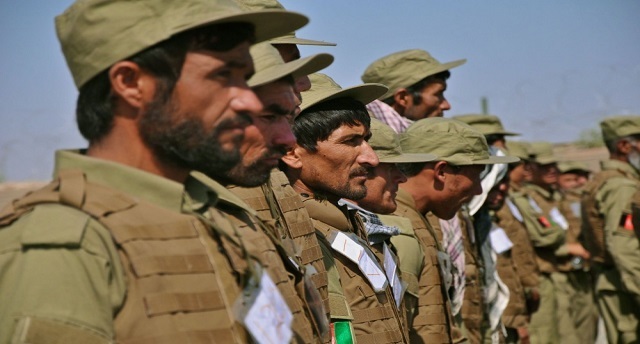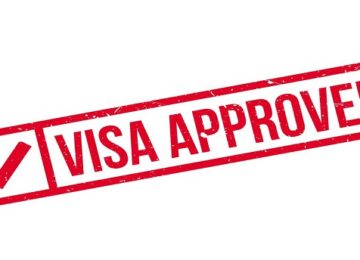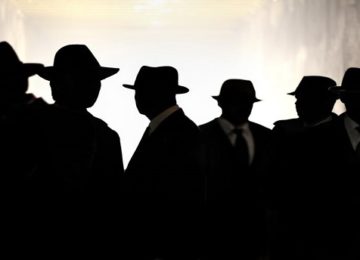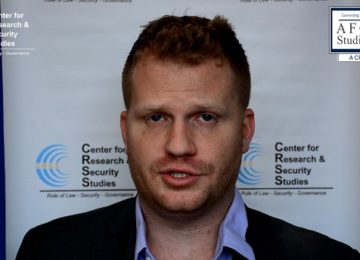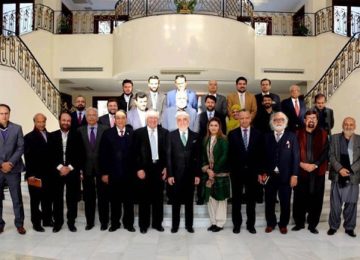October 6, 2020
Funding for the Afghan Local Police (ALP), the largest and longest-lasting Afghan local defense force, ended on 30 September. Despite knowing this was going to happen for more than a year, it was only in early summer that the government decided what to do with the tens of thousands of ALP who are present in more than 150 districts and almost every province. The force has had a mixed record, with some units effectively and with determination defending their communities, while others have behaved so badly they have generated support for the Taliban. Yet whatever the record of individual units, dissolving the force is bound to have repercussions for security.
Report highlights
- The government has known since at least July 2019 that ALP funding would be ending on 30 September 2020 and that it would have to disband the force. Plans for this disbandment were only finalized in early summer 2020 and are only now being implemented.
- The plan is for one third of ALP to be disarmed and retired, one third to be transferred to the Afghan National Police (ANP) and one third to the Afghan National Army Territorial Force (ANA-TF).
- The Ministries of Interior and Defense now have three months to sort, transfer and re-train, or disarm and retire about 18,000 armed men present in 31 of Afghanistan’s 34 provinces, in the middle of a war and a still-lingering pandemic.
- Almost all of the ALP commanders and civilians we interviewed still have no firm idea of government plans for their locality. The uncertainty is undermining morale. Interviewees expressed fears of Taliban takeover and revenge killings.
- All civilian interviewees spoke about the ALP’s role in defending their areas against the insurgency. Some value the ALP above conventional ANSF forces because of its local expertise and commitment and fear its loss. Others think security can be maintained if total numbers of ANSF hold up. However, even civilians in districts with the worst ALP – who commit crime and abuse the citizenry – said it was an important element in the defense against the Taliban.
- Disbanding the ALP was never going to be a risk-free enterprise, but delaying planning and then communicating plans badly have magnified the danger, including of defections to the Taliban.
This report first considers why standing down the ALP was always going to be a difficult task and then outlines the plans which have been drawn up for disbanding it. Finally, it hears from ALP commanders and citizens living in areas where the ALP operates.
Disbanding the ALP – never a risk-free enterprise
The Afghan Ministry of Interior, which oversees the ALP, has known since at least July 2019 that ALP funding was ending on 30 September 2020. The United States, which set up the force, is still its only international funder. This meant that when the US Congress decided to stop funding, disbanding of the ALP became inevitable. Even so, the presidential decree ordering the dissolution was issued only in the early summer of 2020, a few months before money for salaries was due to run out.
The lack of urgency was striking, given that disbanding the ALP was always going to be an enterprise full of risk. Concerns have been raised repeatedly by the US Lead Inspector General, for example, in its quarterly reports to Congress on the US combat mission in Afghanistan over how the force was to be disbanded and whether, as it put it in its June 2020 report:
…armed, and newly unemployed, ALP members would join the ranks of violent extremist groups or the militias of local power brokers. Media reports suggested that some ALP members were already beginning to “switch sides” to join the Taliban, and more may continue to do so. (p21)
The concerns expressed by the Lead Inspector General stem from the view that the ALP is a collection of largely abusive militias. This misrepresents the force’s much more mixed record. In some places, it is the only government force present, in others, a crucial part of an array of forces protecting people and territory against the insurgency. Even where the ALP is not benign, is involved in crime and protection rackets, it may still be significant locally in the fight against the Taliban. The risks of disbanding the ALP were always therefore two-fold, that it could weaken the defense of local areas and that ex-ALP might turn to crime, local powerbrokers or the Taliban for an income or for security. At the same time, multiple factors make disbanding it complicated and risky.
The ten-year-old ALP is Afghanistan’s longest-standing local defense force and, for good or ill, embedded in local communities. It is large – roughly 18,000-strong – and distributed in rural districts across Afghanistan, among them the least accessible and most insecure. The way the ALP was mobilized also creates complications. It is organized into relatively small, village-based units where commanders and men often have pre-existing social and solidarity ties, coming from the same clan, faction, tribe or ethnicity. Typically, ALP units were mobilized by appointing a commander who then recruited his own men, in theory with community ‘vetting’. Such commander-led armed groups have formed the basis for much of the military organization in Afghanistan over the last 40 years – seen in mujahedin factions, PDPA-era ‘tribal battalions’ and the Taliban. They tend to be strong and long-lasting. The bonds of loyalty and mutual obligation make them very powerful militarily – one reason why the Taliban hate local forces, as we explored in a 2018 report, “Enemy Number One: How the Taliban Deal with the ALP and Uprising Groups.” However, those same bonds of loyalty also feature if the armed group is involved in crime or is functioning as a private militia. Commander-led armed groups have also shown a tendency to ‘re-hat’, moving wholesale to a new designation when funding stops or the security or political environment changes. Such re-hatting was seen, for example, in the post-2001 DDR (demobilization, disarmament and reintegration) and reconciliation programs, when the ALP was created and when private security companies were set up.
Local support was absolutely basic to the ALP model and units were only supposed to be set up with local agreement. Where there was local mobilization behind the ALP, this has been fundamental to its success as a local defense force. However, in the race to get boots on the ground in the face of a resurgent Taliban, consultation was frequently by-passed or opposition actually ignored in the implementation. Such shortcutting facilitated the capture of some ALP units by power-brokers, factions or criminal networks. The pattern of powerful people, MPs and other politicians acquiring loyal militias paid for by the state has continued for the whole of the ALP project.
For the men fighting in the ALP, the prospect of being stood down from a local force is particularly alarming and may feel like a death sentence. As AAN research has shown, the mobilization of local men to fight each other can lead to violence which is particularly nasty and intimate because it is not the Taliban fighting ‘outsiders’ – the US army or the ANA – but other local men. The cost of conflict where each side knows the other and their families and clans is high and the risk of setting up new cycles of revenge clear.
Command and control of the ALP, under the Afghan National Police (ANP) and Ministry of Interior (MoI), has always been patchy, which again may further complicate its dissolution. In some cases, well-placed ALP commanders, especially of the worst-behaving units, ‘outrank’ their formal superiors in the ANP, in that they have better links to powerful politicians provincially or in Kabul. There are also, of course, problems with corruption and impunity in the ANP as well. This was the reason why when President Ashraf Ghani wanted to set up a new local defense force in 2018, the Afghan National Army Territorial Force (ANA-TF), he chose the Ministry of Defense (MoD) and Afghan National Army (ANA), with their better reputations, to host it.
Finally, making the disbandment of the ALP even more precarious is its timing. It takes place against the backdrop of the US-Taliban agreement signed in February with its promise of US troop withdrawals. This has created uncertainty among ALP and other Afghan government forces as to whether the US has their backs or is hurrying to leave Afghanistan. Morale has only been further dented, as will be seen in a forthcoming AAN report, by orders to the ANSF since the agreement to take a defensive posture against the Taliban despite continuing insurgent attacks. Many of the districts with ALP, including those where we interviewed commanders and civilians, are under intense pressure from the Taliban.
Despite the precariousness of the task, it is only in the last few months that plans for winding down the force have crystallized.
The Plan
According to those contacted at the Ministry of Defense and Resolute Support, the basic plan is:
- One third of ALP members, including all those 44 or older will hand in their weapons, get severance pay and be retired;
- One third of ALP members will be enrolled into the Afghan National Police (ANP);
- One third of ALP members will be enrolled into Afghanistan’s newest local defense force, the Afghan National Army Territorial Force (ANA-TF).
There were government requests, AAN understands, for ALP to be transitioned to the Popular Uprising Forces, the collection of local defense forces supported by the Afghan intelligence agency, the NDS. It would be the most natural fit, but the Uprising Forces operate with even less oversight and transparency than the ALP. The proposal was never likely to get US backing, given the risk that ALP problems of co-option or criminality could be magnified by transitioning personnel to the far murkier Uprising Forces.
One of the first issues that needed to be dealt with was: how many ALP are there? This sounds like it should be straightforward, but it is not. The official ALP tashkil (the approved size and structure) was set at 30,000 in 2012. As discussed in an earlier AAN report, “Update on the Afghan Local Police: Making sure they are armed, trained, paid and exist”, the US brought the numbers of ALP down to about 22,000 in 2017, which was the number whose identities they could verify and therefore pay (the cost for the ALP dropped by about eight per cent between the last quarter of 2016 and the first quarter of 2017). Some of those who had been on the payroll were ‘ghosts’, imaginary ALP whose salaries were pocketed by others further up the hierarchy; others did exist, but could not be registered because they lived in remote or inaccessible areas. This is one reason why MoI figures for ALP have tended to be higher than US ones in recent years because it continues to include those ALP whom it says are impossible-to-register, but do exist. The most recent number of ALP quoted by the US (in the June Lead General Inspector report) is 18,000. Given that only those enrolled in the Afghan Personnel and Pay System (APPS) will be given severance pay, the MoI has been busy, AAN understands, actively enrolling ALP into APPS ahead of the 30 September deadline.
The decision to move two-thirds of the ALP into the ANA-TF and ANP was based on the thinking that both are also local forces. Even so, transfers will not be entirely straightforward. The ANA-TF is organized at the district, not the village level, and unlike the ALP, ANA-TF soldiers do not live at home, but in barracks or other ANA facilities. Afghan National Police do live at home which may make this a more attractive choice to some ALP. In terms of support to the huge task of selection, training and re-mobilization of ALP, the ANA-TF is funded by the US, which therefore has reasonable control over money and the size of the ANA-TF tashkil. The ANP is funded through the Law and Order Trust Fund (LOTFA), which donors pay into and which is administered by the UNDP; this has tended to blunt efforts at reform and donor conditionality. In all cases however, it is the respective Afghan ministries which decide which ALP will join the ANP or ANA-TF.
The ministries of defense and interior, as well as the various donors, have insisted that new recruits to the ANA-TF and ANP will have to be re-trained, vetted, biometrically enrolled and in APPS (measures designed to reduce corruption and abuse). For the ANA and MoD, being forced to absorb ALP may be a particularly bitter pill. Senior officers were skeptical about the merits of establishing the ANA-TF in the first place, as they feared army discipline would be ruined by hosting ALP-like ‘militias’ in their ranks. Though it is still early to judge, so far the ANA-TF has turned out to be far less a collection of militias than feared, with great efforts made to mitigate this risk (see this recent AAN special report on the force). From the start, MoD officials were adamant that they would never recruit former ALP into the ANA-TF. This, however, is now what the MoD is doing.
Looking at who to select and how best to absorb them into either the ANA-TF and ANP is not straightforward. Some ANA-TF companies (tolais) are under-strength. There are also gaps in the ANP. However, the gaps do not necessarily match where the potential ex-ALP recruits are, nor their skills, experience or ranks. The plan also seems to be about dealing with individuals, rather than moving ALP as a group into the ANA-TF or ANP. This, of course, is good if an ALP unit is abusive, but destroys or at least severely weakens the solidarity at the heart, also, of ALP units fighting hard to defend their area.
The deadline for completing the dissolution of the ALP, including the retirement or transfer of its members, is the end of December 2020. Money is there for this process, including severance pay for those being retired. District changeovers are being sequenced based on the assessed effectiveness of ALP units and how risky it was felt disbandment will be, leaving the riskiest till last when, planners hope, the conflict will also be at a seasonally-lower level.
In the next three months, then, in the middle of a war and a still-lingering pandemic, thousands of armed men present in almost all of Afghanistan’s provinces need to be sorted, organized, re-trained and re-recruited, or disarmed and retired.
How the plan is working out
AAN conducted interviews with 23 people from Zabul, Paktia, Paktika, Logar, Ghazni, Kunduz, Takhar and Badakhshan in September 2020: 10 ALP commanders and 13 civilians (including one who worked in one province and came from another and spoke about the ALP in both locations). The civilians were from a mix of backgrounds, two members of a district council, one of a provincial council, one district governor, a village representative, the head of a development council, an aid worker, three journalists, a civil society activist, a well-known elder and a researcher who is an expert in security and politics in the northern region. All were men. Some interviewees asked not to be named because it might threaten their security. Many of the districts chosen for study are where AAN has carried out previous research, or are in provinces where the ALP are distinguished for either having a good reputation, in terms of providing security and not abusing the population, or a bad one. For discussion of these geographical trends, see the recent AAN/GPPi special report, “Ghosts of the Past: Lessons from Local Force Mobilization in Afghanistan and Prospects for the Future.“
Interviewees were asked whether (and if so, what) they had been told about the dissolution of the ALP, how they thought it would affect their individual situation and how it would affect security in their area. Their responses have been split into three issues that featured strongly: lack of information; fear of worsening security and Taliban takeover and; threats to personal security.
Lack of information in the districts
Most of the ALP commanders interviewed did not know what plans the government had for the force. This is a more serious than the usual frustration caused by the poor communication of a bureaucracy: these are frontline soldiers fighting in dangerous conditions who are also vulnerable to desertion or defection.
Least informed was Sher Muhammad, in overall charge of the ALP in Yahyakhel district in Paktika (which was the subject of a 2018 AAN report, “How to Set up a ‘Good ALP’: The Experience of Yahyakhel District, Paktika and How It Became More Peaceful”): “My militias and I have not been made aware of the process of dissolution of the ALP. I’ve only now learned about it from your call. The local officials have not told us anything about this.”
Several ALP commanders said that ALP officials at the district level had been asked for various documents in their province some months ago, but since then, they had heard only vague or contradictory information about what was going to happen. Commander Jan Muhammad in Chahar Dara in Kunduz, for example, said they had received an official letter five months ago from provincial security officials informing them they would be joining ANA-TF forces. Subsequently, he said provincial security officials told him that ALP units in Kunduz and Ghazni would remain under the MoI. Among the civilian interviewees, there was similarly patchy and uncertain information, even among many in official positions.
Just one of the commanders interviewed has seen his ALP transitioned. Hazratullah was ALP commander in Shajoy district in Zabul; the ALP there were the subject of AAN research in 2016: “How to Replace a Bad ALP Commander: In Shajoy, Success and Now Calamity”. Hazratullah said the provincial governor and police chief had come to Shajoy in September – by helicopter as the road is held by the Taliban – and said the ALP would be disbanded by the end of Mizan (20 October). Hazratullah was transferred – or ‘upgraded’ as he put it – to the ANA-TF, along with many of his men:
… the provincial officials upgraded 108 of us to the ANA-TF. Right now, there are about 80 people left in the ALP… I think this will have no impact on the ALP because they’ve already been told they will not be disarmed or abandoned. They’ll be recruited into the ANP and become part of the ANP tashkil.
For those unsure of what is going to happen, such as Shukrullah in Barak-e Barak district, Logar province, who said he had been told the ALP would be dissolved and would be “merged into the ANA-TF or ANP,” the uncertainty was harming morale: “Our fate is not clear. Every member of the ALP is desperate now. They don’t perform their duties properly and say, if the ALP is dissolved, what should we do?”
An aid worker from Janikhel, Paktika, predicated that in his district, where the Taleban are already encroaching, news about the ALP being disbanded would increase the prospects of people defecting to the Taleban:
In Paktika, today [16 September], the police chief of Janikhel district quit his job and went over to the Taliban along with his weapons. He surrendered. He had been the police chief of this district for the last 17 years. The mood in this part of the country is that the peace talks mean the government is going to be handed over to the Taliban. Therefore, the local officials in the districts are trying to compromise with the Taliban… If the news about the dissolution of ALP becomes public and if the local ALP fighters as well as ANP officials hear this news, they’ll increasingly look to make peace or deals with the Taliban. If they learn about this news, they’ll understand it means the government is going to be handed over to the Taliban.
Several commanders in different provinces said salaries had not been paid for the last few months. While the payment of government salaries is often patchy in Afghanistan, for the ALP not to be receiving wages at a time of uncertainty is particularly troubling; it further undermines morale and adds to a sense that the government cannot be relied on.
One curious gap in the interviews was that, no matter how hazy people’s understanding of the plans, all interviewees spoke not of individuals, but units or parts of units transferring wholesale to the ANP or ANA-TF. As to whether transfer into the ANP or ANA-TF was a viable or attractive option, opinion among ALP and civilians varied; several interviewees addressed this issue in remarks about security, as will be seen in the next two sections.
Also, no one spoke of ALP being retired – which is where, according to the plan, a third should be heading. They only spoke about units being disbanded and possible transfer. The one partial exception to this was the researcher in the north who, while he did not mention retirement per se, did say that in the two provinces he had looked into, Takhar and Faryab, the tashkil had been reduced by about a third, from about 850 ALP to about 580 in Takhar, and from about 400 to 250 in Faryab. In Takhar, at least, there had been many ghost ALP, so possibly the reduction has not affected many actual men.
Impact on security: fears of worsening security and Taliban takeover
Many of our interviewees, both ALP and civilian, said that if the ALP was dissolved, insecurity would worsen in their area. Interviewees feared a vacuum or that the loss of the ALP would not be compensated by extra ANP or ANA. Many interviewees predicted that, without the ALP, the Taliban would capture their district. This is a fear compounded by recent conflict dynamics – interviewees spoke of the Taliban fighting harder and encroaching on territory this year. This matches findings by AAN that violence in contested districts has intensified since the 29 February US-Taliban agreement, as the Taliban have taken advantage of the US largely ending offensive air strikes.
There were mixed views on whether it was preferable to transfer ALP into the ANP and ANA-TF. Some interviewees want conventional forces only and would like to see the ALP replaced by ANA or ANP. Others said conventional forces could never be a substitute for local men with local know-how.
Again, starting with Yahyakhel where the Taliban was in firm control for many years, despite – or possibly because of – a heavy US presence, the district switched allegiance overnight in 2012. New abusive and disrespectful Taliban commanders in the district had driven elders to form their own local defense force, with US and government support, to drive the Taliban out. Yahyakhel became a much more peaceful district as a result: with widespread public support, the Taliban were unable to get a foothold to launch attacks. We spoke to ALP commander Sher Muhammad after a night of “tough… ongoing fighting”:
We have the strength, with the help of God, to repulse the Taleban attacks. In the past, the security situation in our district was very good. This year, the Taleban have put us under a lot of pressure in order to destabilise our district. We have been pushing them back, but there are more Taleban attacks compared to the past.
For both the Taleban and the government, Yahyakhel is important because it is a transit route between Pakistan and various provinces. Sher Muhammad said that currently there are 300 ALP, with security checkposts spread out in different villages.
When there was no ALP in this district, it was completely under Taleban control. There were Americans in this district, but still they could not protect it from the Taleban. When they couldn’t protect this district, how is it possible for [regular] Afghan forces to protect it? If 5,000 Afghan soldiers are deployed to this area and there are no ALP forces with them, the soldiers alone will not be able to maintain security. The day the ALP is dissolved, you will see the fall of the entire district to the hands of the Taleban… There will be deaths. The situation will be messy.
Member of Paktia Provincial Council, Muhammad Rahman Qaderi, from Sayed Karam district, also feared insecurity in the province would worsen if the ALP was disbanded. He said some districts could fall into the hands of the Taleban. It is the local nature of the ALP and its compatibility with the tribal system, he said, which makes the force so effective in Paktia:
There are limited numbers of police and ANA and they aren’t familiar with the locals and the areas that they operate in… There are also some traditional norms in Paktia that prevent violations by one tribe against another which make the ALP work well in this province; most of the time, internal issues are solved through elders’ jirgas [implying there is no danger of ALP becoming involved in local disputes]. Because they’re local men, the ALP are able to identify the enemy, the enemy’s locations and the enemy’s hideouts. Compared to other security forces, the ALP is far more effective.
Civilians in other districts also expressed support for their ALP, with some saying they were irreplaceable by other forces and others predicting that transfer to the ANSF would work:
Several security organisations [ANP, ANA, NDS and ALP] are operating in this district, but have not been able to provide security. For the past two years, ALP have secured the district centre and the Zurmat to Gardez highway. The ALP have also prevented the Taleban searching travellers on the road. If the ALP is dissolved, the district centre and Zurmat-Gardez highway will become insecure [and] the district might fall. The Taleban are highly influential in Zurmat and are always trying to capture it. It is the ALP that stands against them.
Dr Rozi Khan, member of Zurmat district council, Paktia
The ALP has been able to provide security in the area to some extent. They work and cooperate with other forces and jointly defend the area. They are familiar with the area. If the 100 ALP members in our area were merged into ANP or ANA, it would be good because they would officially be in the system and their presence would be effective. The number of other forces like the ANP and ANA are not enough to defend the area and provide security. The enemy is afraid of the ALP.
Village representative in Barak-e Barak, Logar
Other interviewees felt that, so long as the overall number of security forces did not drop and ANA and ANP numbers were increased to make up for the loss of the ALP, security could be maintained.
Many interviewees, both civilian and ALP, voiced fears of a Taliban takeover if the ALP was disbanded. Even in districts and provinces where the ALP has a less than positive reputation, getting rid of it may not be straightforward. A journalist describing the ALP in Kunduz, for example, was frank about its shortcomings.
The ALP has a bad reputation. It has caused serious problems for locals and has no place among the people. It has been collecting ‘taxes’ and other revenues and has been forcing locals to provide food. In fact, many ALP commanders are criminals. They’re involved in robbery, looting private houses, kidnapping, drug trafficking and even the killing of civilians… Most of the ALP commanders have links with powerbrokers and warlords and therefore, the judicial system faces serious challenges in prosecuting them.
Even so, for the government, he said, the ALP plays a positive role:
The ALP has been operating in areas that other security forces can’t operate in. Because they’re local, the ALP has become an effective tool for the government in combatting the Taleban… There’s also a shortage of security personnel in Kunduz so the ALP somehow covers this issue. If the ALP could operate under an official [accountable] structure, that would be really helpful.
Similar views and analysis came from other civilians in Kunduz and in neighbouring Takhar province, which was the subject of a 2019 AAN study which found the ALP there was barely distinguishable from Uprising Forces or unregulated pro-government armed groups; typically, the same commanders and power-brokers control the various groups. Some of these commanders have long-standing feuds with each other and they are invariably involved in drug trafficking and other crimes. Even so, provincial ANP spokesperson Khalil Aser told AAN in 2019 that the ALP was useful. Along with Uprising Forces and informal, pro-government militia forces, he said they took part “in most of the clearance operations in the province. If the ANSF needs militia support, they contact local jihadi leaders to help the ANSF with their militia forces.”
According to an interviewee with knowledge of politics and security in the north, of the four districts with ALP units in Takhar, three are still problematic. Only those in Eshkamesh have, since the AAN report, been reformed and are entirely involved in the defence of the district: “They are now under the district police chief’s management,” he said. “They have improved in terms of principles and discipline.” The ALP in the other three districts, he said, were as bad as ever, smuggling alcohol, drug and weapons. Although all have some members involved in official security duties, dozens of others were busy working as bodyguards for their commanders and other patrons and in one case, farming their commander’s land and looking after his livestock. There are also still dozens of suspected ‘ghosts’ in their ranks. Yet our interviewee still assessed that: “Darqad, Dasht-e Qala and Khwaja Bahauddin districts are all besieged by the Taliban, [so] the presence of the ALP is useful, relatively speaking, as it helps the morale of other government forces.”
He was much more positive about the ALP in another northern province, Faryab, which has ALP in six districts (Qaisar, Pashtun Kot, Khwaja Sabzposh, Dawlatabad, Andkhoi and Shirin Tagab). There were no ghost ALP at all and only in Qaisar had some members been taken off for bodyguard duties. The ALP was fighting hard, he said and was an important element in the defence of district centres, all of which were under “under siege.”
Very few interviewees spoke of what demobilised ALP might do to the community – as per the fears voiced by the US Lead Inspector General – but Dr Rozi Khan from Zurmat did say:
So far, the ALP has provided security to some extent. If the ALP is dissolved, their lives would be in danger. Their members would either join the Taleban or start robbing and looting. Therefore, the security situation in the area would become bad.
Finally, in the one district surveyed by AAN where transition is happening, Shajoy in Zabul, feedback from district governor Wazir Khan was positive. He said they had impressed upon the provincial authorities how effective the ALP was and advised that the men be transferred to the ANSF in order to maintain security and ensure ALP members were protected. They would get government support and continuing incomes, an important factor given that most are from poor families. Looking at it, counterfactually, he said that just dissolving the ALP would have badly destabilised the situation. He also emphasised this was not just about maintaining overall numbers of ANSF in the district:
The ALP men are very effective. 50 ANP or ANA could not protect a single security post that five ALP men could, because they are residents of that area… If the ALP was dissolved, the enemy would fill the vacuum. The Taleban are already sitting in ambush for the ALP men. And if the Taleban learned the ALP was going to be dissolved, they would definitely take revenge. The reason is clear: the ALP men have been the relentless enemy of the Taleban and have killed several Taleban fighters during the fighting.
Former ALP and now ANA-TF commander Hazratullah said his men had been re-vetted, as when they joined the ALP: each ALP man needed guarantees from two local elders, plus the approval of the district municipality. All were already registered in APPS, he said, and have been receiving their salaries since the transfer. Afghan special forces gave them a month’s training. Hazratullah’s one complaint was that they lost their Humvees when they transferred and were given only motorbikes. After a lot of petitioning, he said they were supplied with just one Humvee and two of the far less well-armoured Ranger vehicles:
The people in Kabul cannot understand the fighting situation in Zabul or Shajoy. They don’t appreciate what weapons the militants have and that Afghan soldiers cannot survive with just Rangers and motorbikes.
Impact on the personal security of ALP members
ALP commanders and civilians alike spoke about the likely repercussions of ALP disbandment to the livelihoods and personal security of ALP members and their families. Their fears were tempered by the possibility of ALP getting re-deployed as ANA or ANP. Even then, questions arose as to whether their families would be protected if they did get transfers and were posted away from home and whether other security forces would be able to hold the territory where they lived. Some said a return to civilian life would be difficult for those who have become professional fighters. Many expressed the fear that if government defences failed in the face of the loss of the ALP, a triumphant Taleban would carry out revenge killings. Many ALP said their only option then would be to flee. However, defection would be the obvious other alternative. The fact that ALP units are often made up of multiple members of the same extended family only adds to the complications. Jan Muhammad from Chahr Dara in Kunduz is one such commander who is fighting alongside multiple kinsmen – their preference, he said, as they know they can trust each other:
I have lost ten members of my family in fighting against the Taleban. My brother, my uncles and my cousins got killed in the battle against our enemy. Our farmland and our properties have been usurped by the Taleban. We can’t go to our villages. We have no other option apart from holding guns to protect ourselves – unless we leave the country. We can’t have an ordinary life. Recently, one of my soldiers laid down his weapon and received assurances from the Taleban that they wouldn’t target him. He bought a rickshaw and worked in Kunduz city. After a few weeks, the Taleban shot him dead. It means that we have no other option apart from carrying weapons to protect our families.
In Paktika’s Yahyakhel district, Sher Muhammad laid out similar concerns:
ALP members can’t access their farmland because the Taleban have planted mines there. Even if the ALP members quit their jobs and didn’t go to the frontlines, the enemy would not allow them to live. The Taleban would kill them even if they were not on duty because they are bitter enemies. Also, the ALP members were raised in war and now the war has become their career. They cannot do any other job.
He warned that enmities in his region would not be settled quickly or easily:
The rest of Afghanistan is different. In other parts of the country when there is peace then that is peace, but in our area it is not like that. We are tribal people and we do not make peace easily.
Qaderi from Sayed Karam who serves on the Paktia Provincial Council was also concerned about the members of the ALP:
If the ALP is disbanded and if they aren’t recruited into other security institutions, then it wouldn’t be possible for them to lead ordinary lives. In such circumstances, they’d be forced to join the Taliban and to fight against the government. If the government recruits them into an official military framework, that would be good for security because the ALP are familiar with the people and area. The ALP are also happy to join an official system, rather than be abandoned to their fate.
Abdul Samad, ALP commander of a group (squad) in Jurm district, Badakhshan described how “intense, continuing pressure” from the insurgents and “lack of logistical support” had meant they had had to abandon their homes in the Khostak Valley, which was then occupied by Taliban and foreign fighters. He has been fighting the Taliban over the last eight years and lost many men:
If the ALP is disbanded and our personnel become jobless, it would be a disaster for us. We can’t go back to our village and we won’t have an income or a place to live. In this case, the only option would be to leave the country. Otherwise, the Taleban will kill us.
He said transfer to the ANA-TF (and having to live away from home) would be problematic because it would leave their families unprotected. However, he said: “We are happy to be part of a military structure and to receive professional military training and education. We want to serve our country. My personnel are ready to join a military framework and to remain in the district.”
Abdul Rauf Hamidi, ALP commander in Dasht-e Qala, Takhar, who is commander of 40 ALP and 50 Uprising Force soldiers said they had rejected an offer to integrate ALP into the ANA-TF because it is a “failed project in Takhar province.” The ANA-TF in neighbouring Khawja Ghar district, he said, had failed to protect the district, mainly because the MoD did not provide timely support or supplies. Hamidi said they would prefer to join the ANP because it was better at supplying police in the field. If they could not join the ANP, he said they would have to leave the area, as many of his men had already done, going to Kabul or Iran or Turkey. Staying in the district would be impossible.
Several interviewees expressed bewilderment at what was happening and how ALP sacrifices had been forgotten. An aid worker in Qarabagh district of Ghazni described the failing morale there, how the Taliban were tightening their siege of the ALP and that some members had already left for Ghazni City or Kabul:
There is no stomach among these ALP men in Qarabagh to defend the area. Also, there is no sense that they are receiving any support from the provincial government or the nearby security posts of ANA soldiers. The ALP people think that either the government authorities are being dishonest with them or the project is going to be finished. The local people think the ALP men have been abandoned to the Taliban.
Conclusion
There was never going to be a good time to disband the ALP. However, 2020 has proven particularly inauspicious. The disbandment is taking place in the context of the US-Taliban agreement in Doha which has leant legitimacy to the insurgents, sparked talk of an interim government with Taliban members and led some to interpret events as US forces preparing to leave Afghanistan. The worries caused by Doha have dovetailed into and amplified the anxiety sparked by the dissolution of the ALP.
Almost none of our interviewees spoke about the potential for former ALP to turn to crime or go into the private militias of power brokers or to join the Taliban because of unemployment – the primary fear expressed by the US Lead Inspector General. Rather, their predictions of the consequences of disbanding the ALP were more existential, of how it would weaken the defense against the insurgency to such an extent that the Taliban could take over locally. Interviewees spoke of the threat of revenge killings and the possibility that ALP and their families would have to flee the area. The alternative, largely although not entirely unspoken, is of course to defect to the Taliban. The suspicion that the government has abandoned the ALP will have magnified this risk.
Decisions as to how to disband the force should have been taken as soon as it was clear funding would be cut, with a focus on mitigating the harm to local security and the personal safety of ALP members. For the government to ignore the looming necessity of disbanding the force was unfair. Even those in ‘bad’ ALP units have lost comrades fighting the Taliban. Putting off making plans and then failing to communicate them accurately was also bad policy. It has exacerbated the uncertainty and reinforced suspicions that the government does not care. For some, it is evidence that the US is preparing to hand over Afghanistan to the Taliban. There are three more months for the disbandment to unfold. It is not long to complete a difficult transition. The consequences may, as in Shajoy, be less dreadful. Even so, damage has already been done to morale by this late-coming and badly-communicated transition.
Courtesy: Afghan Analysis Network



